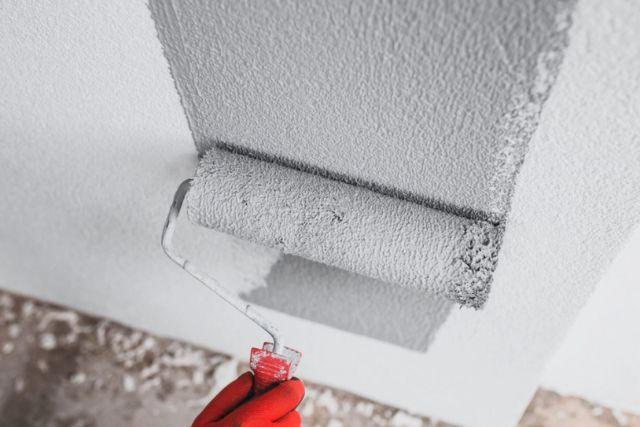Looking to give your plaster walls a fresh new look but unsure of what type of paint to use?
We explore the different types of paint suitable for plaster walls, including latex, acrylic, and oil-based options.
Discuss important factors to consider when choosing paint, such as surface texture, moisture resistance, and priming requirements.
Provide tips on preparing plaster walls for painting, best practices for painting, and how to maintain your painted walls for long-lasting beauty.
Whether you're a seasoned painter or a DIY enthusiast, read on to learn everything you need to know about painting plaster walls.
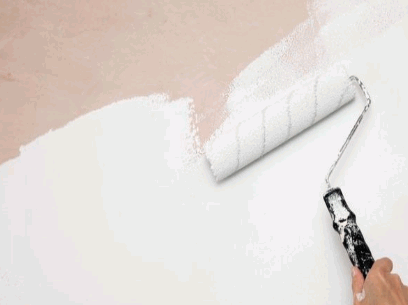
Types Of Paint For Plaster Walls
In terms of painting newly plastered walls, the choice of paint can significantly impact the final look and durability of the surface. Different types of paint such as emulsion paint, acrylic paint, and oil-based paint offer varying benefits and finishes.
Emulsion paint, known for its ease of use and quick drying time, is a popular choice for plaster walls due to its flexibility and breathability. Acrylic paint, on the other hand, is more durable and provides a smooth, glossy finish that works well on both new and old plaster surfaces. In contrast, oil-based paint is renowned for its high durability and rich colour payoff, making it suitable for high-traffic areas or where moisture resistance is needed.
Choosing the right paint type depends on factors such as the type of plaster wall, the desired finish, and the level of maintenance required. While emulsion paint is ideal for most interior surfaces, acrylic paint is preferred for its longevity, especially in areas prone to moisture or humidity. Oil-based paint, although less environmentally friendly, offers unparalleled durability and is often used in areas that require frequent cleaning or are exposed to wear and tear.
Latex Paint
Emulsion paint is a popular choice for painting plaster walls due to its durability and ease of application.
This type of paint contains synthetic polymers that provide excellent flexibility and resistance to cracking, making it ideal for surfaces that may experience slight movements, such as plaster walls.
When applying emulsion paint on plaster walls, using a mist coat or primer is crucial to ensure proper adhesion and prevent issues like peeling or uneven coverage.
An undercoat helps to seal the surface and create a smooth base for the paint, while a mist coat helps the paint to grip and bond effectively.
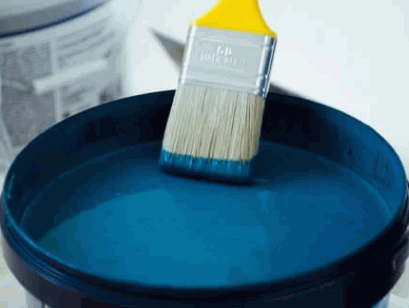
Acrylic Paint
Acrylic paint is known for its quick drying time and versatility, making it a suitable option for painting new plaster. Achieving a smooth paint finish with acrylic paint, especially white emulsion, can enhance the overall look of the walls.
One of the key benefits of using acrylic paint on plaster walls is its durability. This type of paint is resistant to flaking and cracking, ensuring a long-lasting finish. Acrylic paint is easy to clean, making it a practical choice for high-traffic areas or spaces prone to dirt and stains. Its water-based formula not only dries quickly but also emits fewer fumes compared to oil-based paints, creating a more pleasant painting experience. Acrylic paint offers a wide range of colours and sheens to suit different design preferences and decor styles.
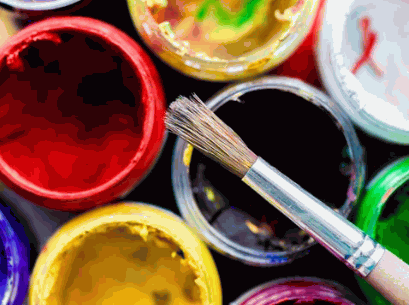
Oil-Based Paint
Oil-based paint offers a durable and high-sheen finish, ideal for high-traffic areas or when a more robust paint finish is desired. When undertaking a painting project on plaster walls, using a suitable primer like Dulux Trade Supermatt can ensure a smooth and long-lasting result.
One of the key advantages of opting for oil-based paint on plaster walls is its exceptional durability against wear and tear. The high sheen finish not only adds a touch of elegance but also makes it easier to clean, making it perfect for busy areas like kitchens or hallways. Oil-based paint has excellent adhesion properties, allowing it to adhere well to the porous surface of plaster walls, preventing peeling or flaking over time.
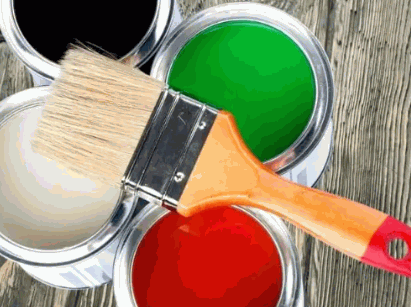
Factors To Consider When Choosing Paint For Plaster Walls
Selecting the right paint for plaster walls involves considering various factors such as the surface texture, desired finish, available colour options, and the scope of the painting project. Each factor plays a crucial role in determining the overall outcome and longevity of the paint job.
When assessing surface texture, it is essential to understand how the paint will interact with the unique characteristics of plaster walls. Smooth or rough textures may require different types of paint for optimal adhesion and coverage. Determining the desired finish is crucial, whether it be matte, eggshell, satin, or gloss, as each finish offers distinct aesthetics and levels of durability.
Surface Texture
The surface texture of plaster walls can vary based on factors such as the application technique, the quality of plastering, and the presence of any imperfections like dust or uneven patches. Ensuring a smooth and even surface is crucial before applying paint.
The surface texture of the plaster plays a vital role in the overall finish of the painted wall. A rough or uneven surface can affect the paint application, leading to an inconsistent look. Interior fillers are often used to address imperfections and create a seamless base for painting. Excessive filling can result in a build-up that alters the wall texture. Dust particles left on the surface can also interfere with the adhesion of the paint, causing it to flake or peel over time.
Moisture Resistance
Moisture resistance is an essential consideration when choosing paint for plaster walls, especially in areas prone to dampness or humidity. Properly sealing the walls, including those near plywood floors, and using moisture-resistant paints can prevent issues like peeling or mould growth.
Plaster walls are particularly susceptible to moisture damage due to their porous nature, making it crucial to select paints that offer moisture resistance. By opting for high-quality acrylic or latex paints with added moisture-resistant properties, you can create a protective barrier that safeguards the walls against dampness.
Sealing the walls before applying the paint is another effective method to enhance moisture resistance. This step not only helps to prevent water infiltration but also ensures better adhesion of the paint, increasing its durability in the long run.
In areas with high humidity levels, such as bathrooms or basements, it's essential to use specialised moisture-resistant paints specifically formulated for such environments. These paints contain additives that inhibit mould growth and resist moisture penetration, offering enhanced protection to the plaster walls.
Priming Requirements
Properly priming plaster walls before painting is crucial to ensure adhesion, coverage, and a professional finish. Using a high-quality primer can create a smooth base for the top coat and enhance the longevity of the paint job.
Priming serves as the foundation that sets the stage for a successful painting project.
A primer acts as a bridge between the raw surface of the plaster walls and the paint, promoting better adhesion and reducing the chances of flaking or peeling over time. Without proper priming, paint can struggle to adhere uniformly, resulting in an uneven finish.
Additionally,
primer also helps to seal porous surfaces and even out the absorption rate of the paint, preventing it from being absorbed unevenly by the plaster. This leads to a more consistent color and sheen across the painted surface.
Colour Options
Choosing the right colour for paint can transform the ambience and aesthetics of a room with newly plastered walls.
Exploring different colour options is essential to determine the vibe you want to achieve in your living space. Lighter shades like soft pastels or whites can make a room feel more spacious and airy, while bold hues like deep blues or rich reds can add a sense of drama and cosiness.
Colour psychology plays a significant role in setting the mood of a room; for example, greens and blues are known for their calming effects, while yellows and oranges can promote energy and creativity. It's crucial to consider factors like natural light, room size, furniture style, and personal preferences when selecting the perfect paint colour.
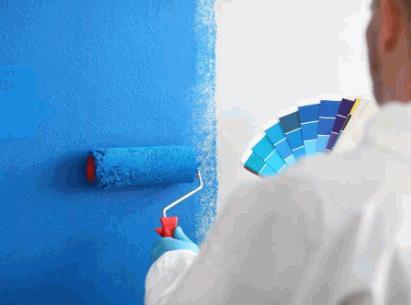
Preparing Plaster Walls For Painting
Before embarking on a painting project for plaster walls, it is crucial to prepare the surfaces adequately. This preparation includes cleaning the walls, repairing any damages or imperfections, and applying a suitable primer to ensure a flawless paint application.
Start the preparation process by thoroughly cleaning the plaster walls using a mild cleaning solution and a sponge or cloth. Remove any dust, dirt, or grease that may have accumulated over time. Clean walls provide a smooth surface for paint adhesion and prevent any potential issues in the future.
Next, carefully assess the walls for any cracks, holes, or other damages. Use a suitable filler or spackling compound to repair these imperfections. Ensure that the repaired areas are smooth and level with the rest of the wall to achieve a seamless finish.
After cleaning and repairing, it's essential to apply a high-quality primer specifically designed for plaster surfaces. Priming helps seal the walls, promotes better adhesion for the paint, and enhances the overall durability of the finish. Allow the primer to dry completely before proceeding with the paint application for optimal results.
Cleaning The Walls
Cleaning the plaster walls thoroughly before painting is essential to remove any dust, debris, or residues that could affect paint adhesion. Using tools like a roller or paint sprayer can make the cleaning process more efficient and ensure a smooth surface for painting.
In terms of using a roller for wall cleaning, a microfibre or lambswool roller cover can be ideal for effectively picking up dust and dirt from the walls. The textured surface of these roller covers can reach into crevices and corners, providing a thorough cleaning.
Alternatively, utilising a paint sprayer with a cleaning solution can offer a quick and comprehensive way to prep the walls. The sprayer can disperse the cleaning liquid evenly across the surface, ensuring that all areas are adequately cleaned before applying new paint.
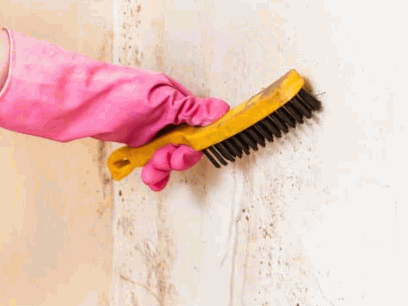
Repairing Any Damages
Addressing any damage on plaster walls, such as cracks, holes, or uneven surfaces, is crucial to achieve a seamless paint finish. Using interior filler and a paintbrush can help in repairing these imperfections effectively before painting.
Begin by assessing the extent of the damage on the plaster walls. For cracks, use a putty knife to widen the crack slightly before applying the interior filler. Ensure that the filler is smooth and level with the surrounding wall surface.
Once the filler has dried, gently sand it down with fine-grit sandpaper to create a seamless transition. A high-quality paint brush is essential for applying paint evenly over the repaired areas, and blending them with the rest of the wall.
Check out: How To Repair Plaster Walls
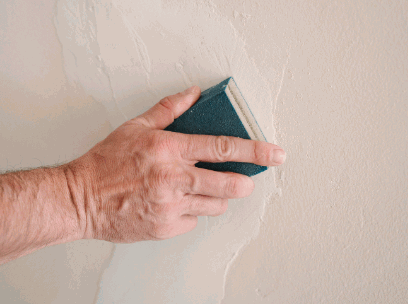
Priming The Walls
Applying a primer to fresh plaster walls is crucial to ensure proper adhesion and uniform paint coverage. The primer creates a stable surface for the top coat, enhancing the overall finish and longevity of the paint job.
Priming newly plastered walls serves as a foundation for a flawless paint application. Without a primer, the porous nature of fresh plaster can absorb paint unevenly, resulting in blotchy or inconsistent colour tone. This key step not only guarantees a smoother finish but also prevents the topcoat from peeling or chipping over time. A primer helps seal the surface, reducing the amount of paint needed and ultimately saving costs. It's like setting a canvas for a masterpiece - a necessary preparation for a stunning end result.
Best Practices For Painting Plaster Walls
Achieving a flawless paint finish on plaster walls requires following best practices that ensure quality and durability. Using high-quality tools and materials, applying multiple coats, allowing proper drying time, and employing the right techniques are essential for a successful painting project.
To enhance the longevity of the paint job, consider investing in high-quality top coats. These top coats not only protect the underlying layers but also contribute significantly to the aesthetic appeal of the painted surface. Opting for contract matt paint can provide a smooth and even finish with a low sheen, perfect for plaster walls. It is advisable to test a small area first to ensure the desired finish, as different plaster surfaces may react differently to paint.
Use High-Quality Tools And Materials
Using high-quality tools and materials is key to achieving a professional paint finish on plaster walls. From selecting the right paint and primer to utilising tools like paint scrapers and rollers, each component contributes to the overall quality of the painting project.
Premium paints offer better coverage and durability, ensuring your walls look vibrant for years to come. The choice of primer is crucial for proper adhesion and a smooth surface.
Investing in quality application tools like brushes and trays can make the process more efficient and result in a flawless finish. Using top-notch tools reduces the risk of brush strokes and uneven textures, elevating the overall aesthetic appeal of your walls.
By prioritizing quality materials, you can transform your plaster walls into a work of art that exudes elegance and sophistication.
Apply Multiple Coats For Better Coverage
Applying multiple coats of paint on plaster walls is essential for achieving better coverage, especially on fresh plaster surfaces. Each coat of emulsion or paint builds up the colour depth and ensures a uniform finish across the entire surface.
When multiple coats are applied, any imperfections or uneven areas on the plaster are effectively concealed, resulting in a smoother and more professional appearance. The increased durability of the paint job is a notable advantage, as several coats create a protective barrier that enhances the wall's resistance to wear and tear.
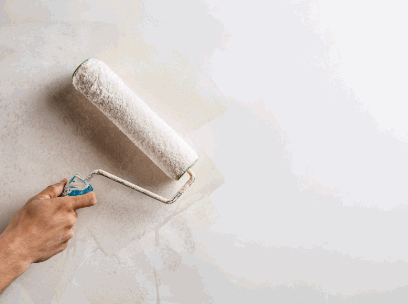
Allow Sufficient Time For Each Coat To Dry Properly
Allowing sufficient drying time between coats of paint on plaster walls is crucial to prevent issues like uneven drying, colour bleeding, or dust particles settling on the surface. Proper ventilation and a controlled environment can aid in achieving a smooth and flawless paint finish.
When each layer of paint is given ample time to dry completely, it allows for better adhesion and durability of the paint layers.
Proper drying intervals are essential for ensuring that colours appear consistent across the entire surface. Rushing through the painting process can lead to visible imperfections and irregularities in the final outcome.
Use Proper Techniques For Painting Plaster Walls
Employing correct painting techniques when painting plaster walls is essential for achieving a professional and flawless finish.
Whether opting for a paintbrush, roller, or paint sprayer, using the appropriate tool for the job is pivotal in ensuring even coverage and smooth results.
Each tool has its own advantages - brushes are great for precision work, rollers cover large areas quickly, and sprayers offer a fast and efficient application, particularly on larger surfaces. Mastering proper application methods such as feathering edges, maintaining a wet edge, and avoiding drips and lap marks can elevate the aesthetics of the wall. By taking the time to employ these techniques, you not only enhance the visual appeal of your space but also increase the longevity of the paint job.
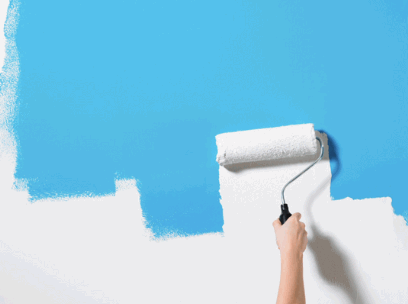
Tips For Maintaining Painted Plaster Walls
Once you have painted your plaster walls, proper maintenance is key to preserving the paint finish and the overall appearance of the walls. Regular cleaning, timely touch-ups, and preventing moisture buildup can extend the lifespan of the painted surfaces.
In terms of cleaning painted plaster walls, opt for a gentle approach. Dust the walls regularly with a soft-bristled brush or a duster to prevent dirt and debris from building up. For tougher stains, use a mild solution of water and gentle soap, avoiding harsh chemicals that can damage the paint.
Regular touch-ups are crucial to keep your walls looking fresh. Keep leftover paint for each colour used, labelled and stored properly for quick fixes. Scan the walls periodically to spot any nicks or discolouration that need attention.
To control moisture levels, ensure proper ventilation in the room by using extractor fans, opening windows, or using a dehumidifier if needed. Address any leaks or water issues promptly to prevent water damage that can affect the paint.
Regular Cleaning
Regular cleaning of painted plaster walls helps in preserving the colour vibrancy and finish while removing dust, dirt, and grime that can accumulate over time. Using a soft paintbrush or damp cloth for cleaning can prevent damage to the painted surface.
Additionally,
- gentle cleaning solutions specially formulated for painted surfaces can be applied sparingly to tackle tougher stains without causing harm.
- It's crucial to avoid abrasive materials like rough sponges or harsh chemicals that can strip off the paint.
- Dusting the walls regularly with a microfibre cloth can also help maintain their appearance and prevent build-up.
- Investing time in these cleaning practices not only enhances the aesthetics of your home but also extends the lifespan of the painted plaster walls.
Touching Up Any Imperfections
Addressing any imperfections or damages on painted plaster walls promptly through touch-ups can help preserve the integrity of the paint finish. Using the same quality paint or contract matt for touch-ups ensures a seamless blend with the existing paintwork.
Regular touch-ups play a crucial role in maintaining the overall aesthetic appeal of your living space, helping to extend the lifespan of the painted surfaces. Over time, minor blemishes like scratches, chips, or scuff marks can detract from the smooth finish of your walls. By promptly addressing these imperfections, you not only safeguard the structural integrity of the walls but also enhance the visual appeal of the room.
Avoiding Moisture Buildup
Preventing moisture build-up on painted plaster walls is essential to avoid issues like mould growth, peeling paint, or surface damage. Proper ventilation, moisture barriers, and regular inspection can help in maintaining the integrity of the paint finish.
Moisture control measures are crucial for painted plaster walls as excess moisture can seep through the paint layers, leading to a breakdown in adhesion and causing unsightly blemishes over time. By implementing moisture control strategies, homeowners can prolong the lifespan of their painted surfaces and ensure a more aesthetically pleasing interior environment.
A humid environment can provide a breeding ground for mould and mildew, which not only impact the visual appeal of the walls but also pose serious health risks to the occupants of the space. Effective ventilation systems and the use of dehumidifiers can significantly reduce the moisture content in the air, safeguarding both the structural integrity and the occupants' well-being.

